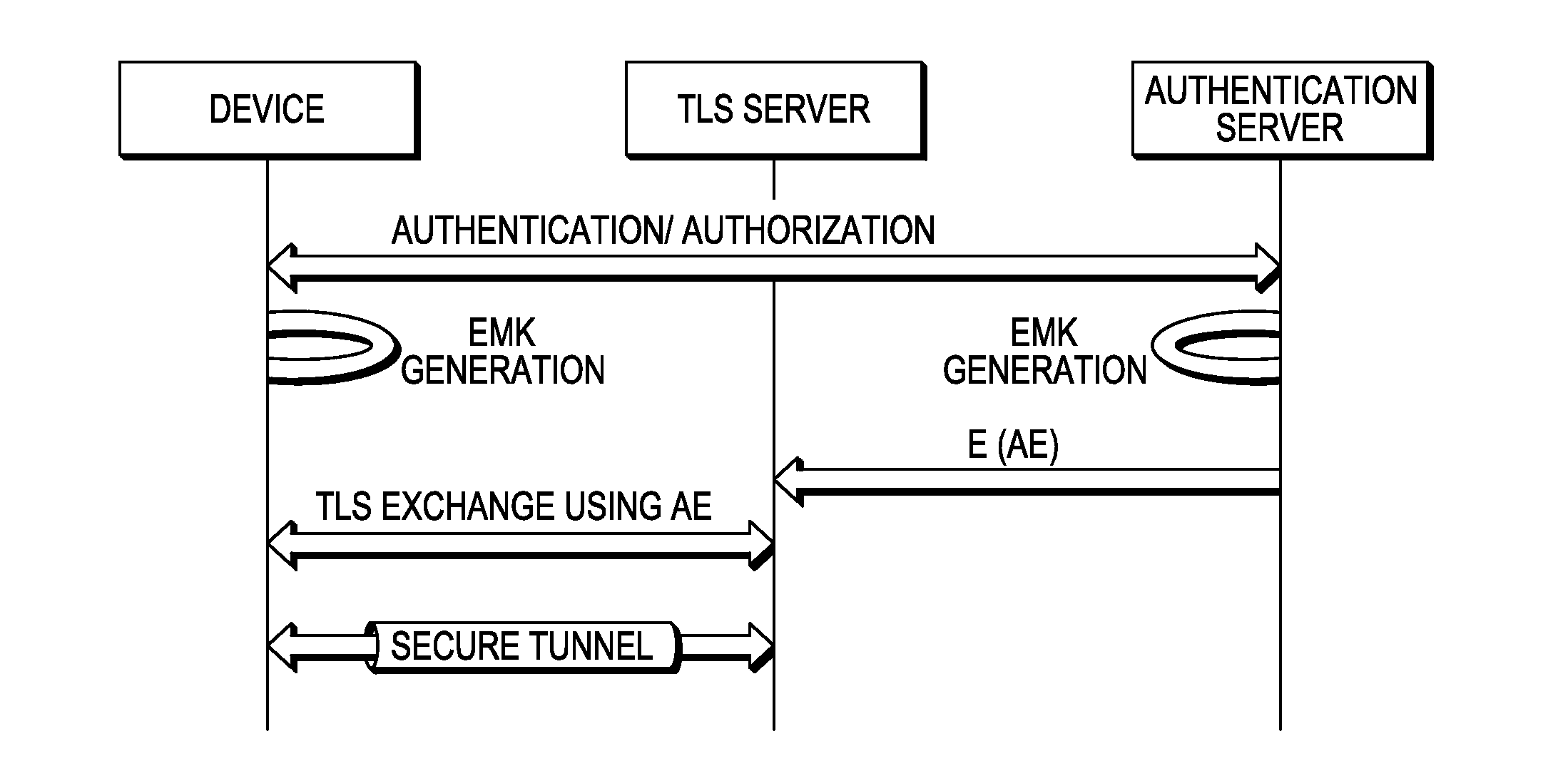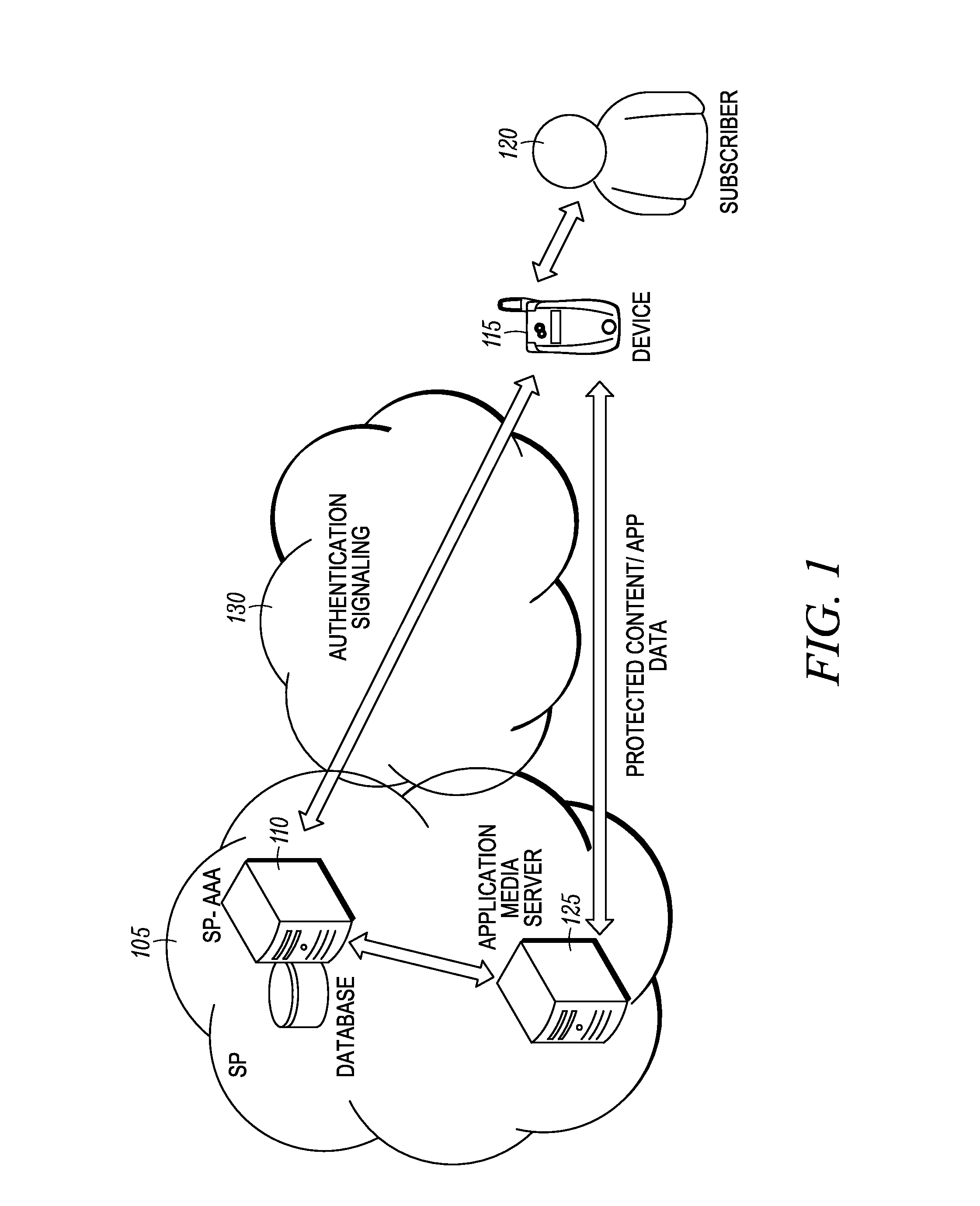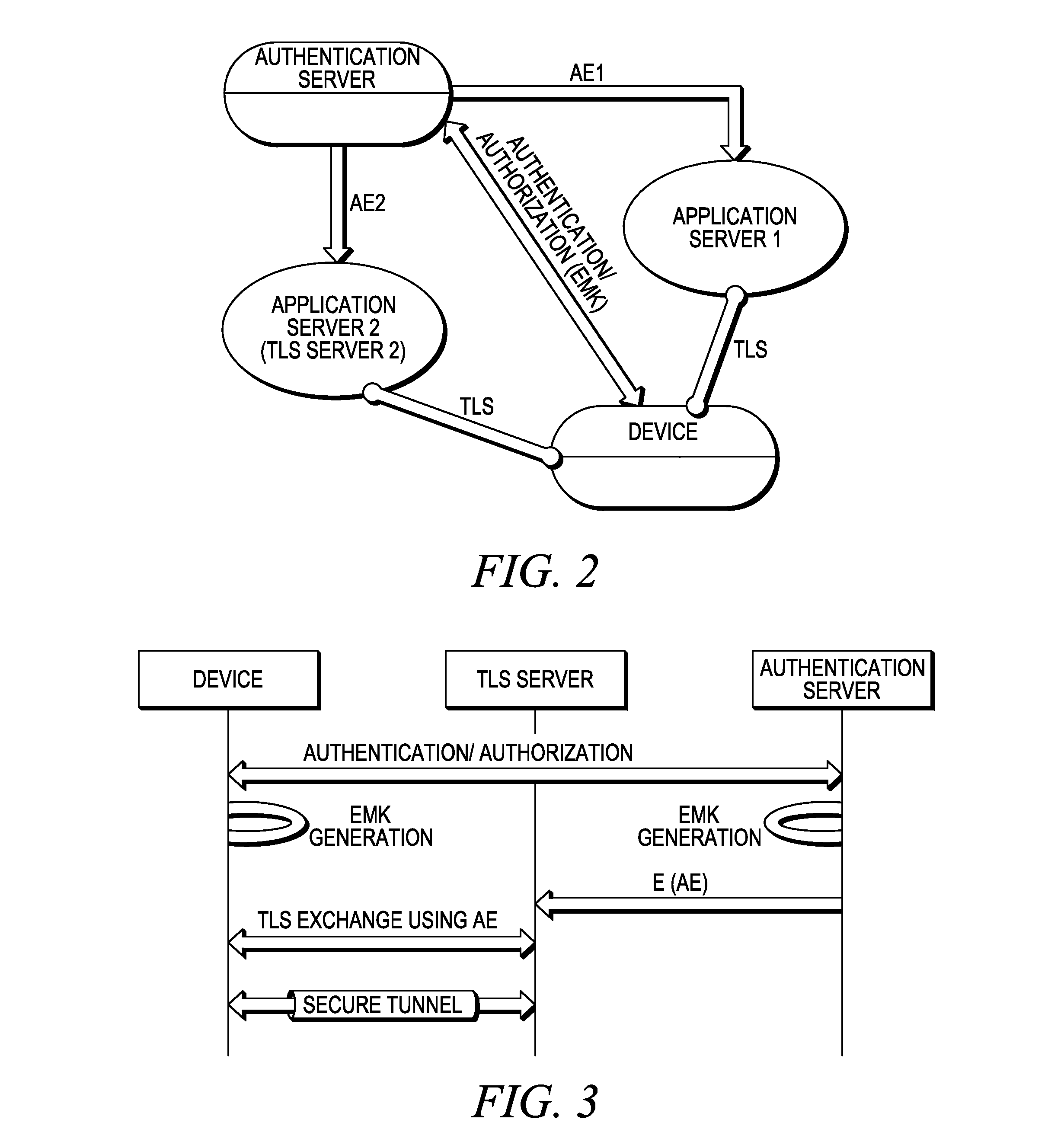System and method for cognizant transport layer security (CTLS)
a cognizant transport and security technology, applied in the field of cognizant transport layer security, can solve the problems of device without risking the business interest of content owner, device without compromising consumer privacy,
- Summary
- Abstract
- Description
- Claims
- Application Information
AI Technical Summary
Benefits of technology
Problems solved by technology
Method used
Image
Examples
example 1
[0066]In this embodiment, the TLS client and the TLS server include the prior evidence (AE) directly in the TLS exchange, either directly as a pre-master secret, directly as a client.random numbers, or, indirectly by using AE to create the pre-master secret or client.random.
[0067]The TLS client and TLS server include AE directly in the TLS exchange. Inclusion of evidence (AE) in the TLS exchange can be in various ways, for example:
[0068]1) For Ciphersuites where the client generates the pre-master secret (i.e. using RSA as the Key Exchange Algorithm), use the AE as the pre-master secret that is sent RSA encrypted by one party to another. The client typically has the AE readily available, so it encrypts the AE as if it were the pre-master secret with the server's public key as it is done in TLS. When the TLS server decrypts the pre-master secret with its private key, it checks it against the AE received from the authentication server and if there is not a match it won't proceed with ...
example 2
[0071]The TLS client and the TLS server perform TLS as normal, but once the TLS is completed, they perform a challenge response mechanism to provide the proof of possession of the evidence (AE) to each other.
[0072]As shown in FIG. 3, the client and server perform TLS as normal, but once the TLS is completed, they perform a challenge response mechanism to provide the proof of possession of the evidence (AE) on the previous authentication. The challenge response can provide one way or mutual proof of possession. In either way the evidence is not used in the signaling but is used to calculate the responses using common cryptographic algorithms such as a keyed hash function (RES=hash (AE, CHAL). So to allow the TLS server to calculate any data, the evidence needs to be passed to both sides (if not available, which is the typical case for TLS server). Also the algorithm for calculating the responses must be agreed upon between the two TLS parties or pre-configured. The details are shown ...
example 3
[0076]The embodiment illustrated in Example 3 shares the same background as in Example 2, except that in order to avoid the need to pass the evidence to any of the TLS parties (e.g. an authentication server sending the evidence to the TLS server), the authentication server first calculates a number of authentication vectors (AVs), such as challenge / response pairs and authentication data (e.g. all the needed challenges and responses or any other type of authentication data) and pass them along to TLS parties. The TLS server can pass the challenge from the AV to the client and compare the received response from the client with the response included in the AV. The authentication server does not have to reveal the AE to the TLS server and accordingly, the same AE can be used towards all TLS servers without the need for further key derivation. Like 3G AKA, only a server in possession of the master keys calculates the authentication vectors (AV), however, in this case, authorized parties ...
PUM
 Login to View More
Login to View More Abstract
Description
Claims
Application Information
 Login to View More
Login to View More - R&D
- Intellectual Property
- Life Sciences
- Materials
- Tech Scout
- Unparalleled Data Quality
- Higher Quality Content
- 60% Fewer Hallucinations
Browse by: Latest US Patents, China's latest patents, Technical Efficacy Thesaurus, Application Domain, Technology Topic, Popular Technical Reports.
© 2025 PatSnap. All rights reserved.Legal|Privacy policy|Modern Slavery Act Transparency Statement|Sitemap|About US| Contact US: help@patsnap.com



